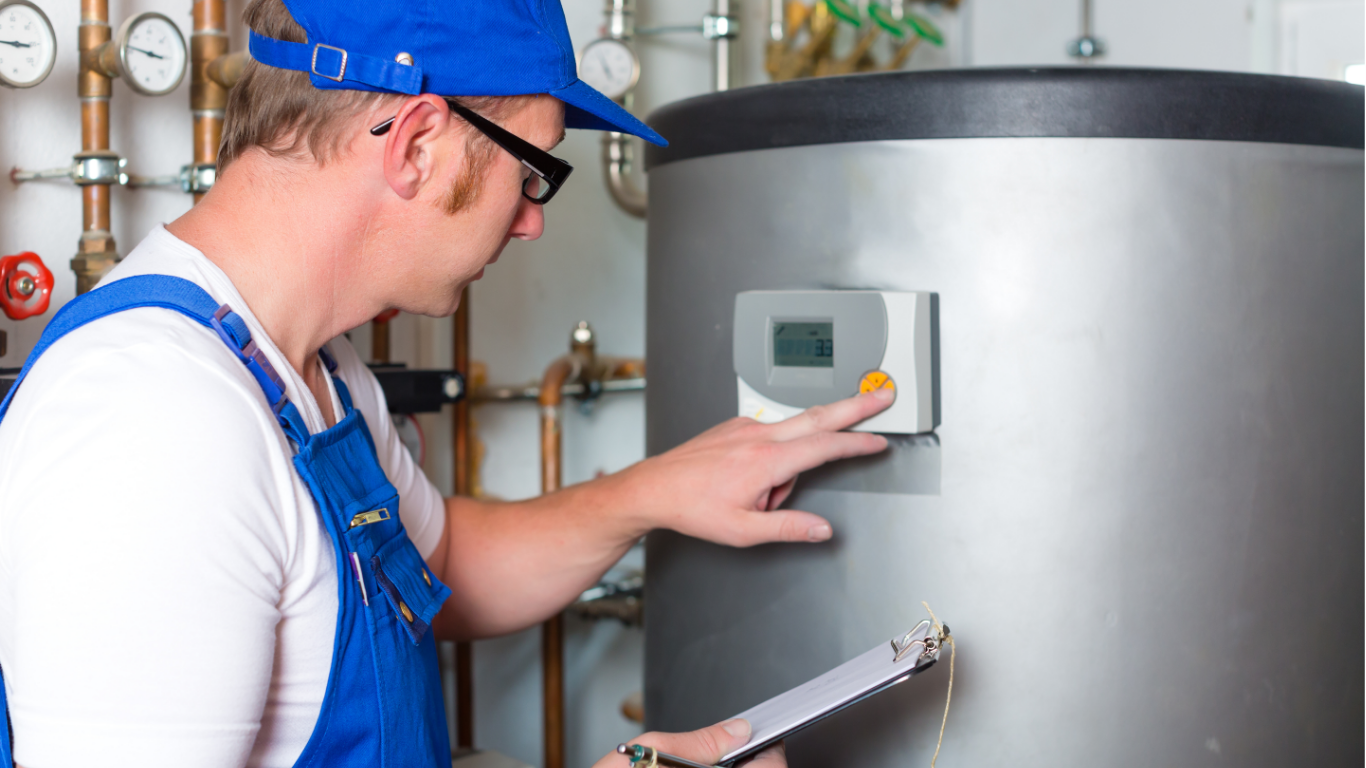December 8, 2023
The Warning Signs of a Faulty Furnace Ignitor

As the chilly winds of winter begin to sweep through our neighborhoods, our trusty furnace systems become invaluable in keeping our homes warm and cozy. Among the various components that make your furnace tick, the gas furnace ignitor plays a pivotal role in the heating process. Yet, it often remains hidden and unnoticed until something goes awry.
Ignoring the warning signs of faulty furnace ignitors can lead to not only discomfort but also potential safety hazards and increased energy bills. That’s why our Raleigh furnace repair techs from Bowman Mechanical Services are shedding light on the critical role of a furnace ignitor so you’ll be well-equipped to recognize when your it needs troubleshooting or maintenance services.
The Role of a Furnace Ignitor
The furnace ignitor, though often overlooked, is a critical component in your home’s heating system. Its primary function is to initiate the combustion process that generates heat in your furnace. It achieves this by producing a burst of intense heat, which ignites the gas or oil in the furnace’s combustion chamber. This hot surface ignitor triggers the system’s heating cycle, where the furnace warms the air that is then distributed throughout your home via the ductwork.
Furnace Ignitor Heating Process
The ignitor’s role in the heating process is pivotal. Once the thermostat signals a need for heat, the furnace ignitor springs into action. It begins by heating up to a high temperature, usually around 2,000 degrees Fahrenheit or more, depending on the type of flame sensor ignitor your furnace employs. This extreme heat is required to ignite the fuel effectively.
When the ignitor reaches its designated temperature, it emits a bright glow, which is crucial for igniting the fuel source. For gas furnace pilot lights, the ignitor’s pilot flame ignites the gas burners, while for oil furnaces, it ignites the pilot light.
Once the combustion process is initiated, the furnace generates heat, which is then distributed throughout your home, providing warmth during the colder months.
Warning Signs of a Bad Furnace Ignitor
Recognizing warning signs that you may be in need of a furnace ignitor replacement or repair service is essential to improve its efficiency and ensure a warm and comfortable home during the colder months. If you notice any of these issues, consider seeking professional HVAC assistance to diagnose and rectify the problem.
Dim or No Glow When the Furnace Starts
One of the most noticeable warning signs is a dim or absent glow when your furnace initiates. The ignitor should emit a bright, visible glow when heating up. A dim or nonexistent glow indicates a potential issue with the ignitor’s ability to reach the required temperature for ignition.
Frequent Heating Cycles Without Ignition
If your furnace seems to start and stop frequently without successfully igniting the fuel, it’s a clear indication of an ignitor problem. These repeated cycles can strain the furnace, reduce its efficiency, and lead to increased wear and tear on other components.
Strange Noises During Ignition Attempts
Unusual noises during the ignition process, such as clicking, snapping, or banging sounds, can be associated with a faulty ignitor. These noises often result from the ignitor struggling to heat up and ignite the fuel properly.
An Unexplained Increase in Energy Bills
If your energy bills start to climb without a significant change in heating demands or weather conditions, it’s worth investigating your furnace’s performance. A malfunctioning ignitor can lead to inefficient heating, causing your furnace to work harder and use more energy.
Irregular or Inconsistent Heating
Inconsistent heating throughout your home, with some rooms feeling warmer than others, can be a sign of a faulty furnace ignitor. Inadequately functioning furnace ignitors can lead to uneven distribution of heat, leaving certain areas of your home colder than desired.
Visual Signs of Damage
Regular visual inspections can help you spot issues with the furnace ignitor. Look for:
Cracks or damage
Accumulated dirt or soot
Loose connections
Signs of corrosion

The Dangers of Ignoring Ignitor Problems
Ignoring warning signs of a faulty furnace ignitor may seem like a minor inconvenience at first, but it can ultimately lead to more significant and increased furnace ignitor cost for repairs. Here’s how neglecting these issues associated with a faulty furnace ignitor can escalate.
Complete Furnace Failure
Continued operation with a malfunctioning ignitor can strain other furnace components. Over time, this strain may lead to a complete furnace breakdown, leaving you without heat when you need it the most and with an increase in furnace ignitor replacement cost and a full HVAC system replacement.
Higher Repair Costs
What starts as a simple ignitor problem can evolve into a complex issue that requires extensive repairs or even a full furnace replacement. The longer you wait, the more expensive the repairs are likely to become.
Reduced Lifespan
Neglecting the furnace breaker ignitor’s health can significantly reduce your furnace’s lifespan. Furnaces are designed to work efficiently and reliably, but forcing them to operate with a faulty ignitor places undue stress on the system, causing premature wear and tear.
Incomplete Combustion
If the ignitor fails to ignite the fuel properly, it can result in incomplete combustion. This incomplete combustion can release dangerous gases, including carbon monoxide (CO), into your home. CO is odorless and colorless, making it a silent and potentially lethal threat.
Delayed Ignition
Delayed ignition occurs when the fuel-air mixture in the combustion chamber ignites later than intended. This can result in a sudden, explosive ignition, leading to furnace damage or even a fire hazard.
Fire Hazard
In extreme cases, a faulty ignitor can cause overheating or electrical problems, increasing the risk of a fire hazard within the furnace or the surrounding area.
Gas Valve Damage
If the ignitor fails to ignite the gas burner properly, the gas valve may remain open longer than necessary. This can lead to gas buildup in the combustion chamber, potentially damaging the gas valve and other components.
Heat Exchanger Damage
Inefficient ignition can cause excessive heat within the furnace, leading to damage to the heat exchanger. A damaged heat exchanger not only reduces heating efficiency but can also introduce CO into your home.
When to Seek Professional Assistance for a Faulty Furnace Ignitor
Knowing when to seek professional assistance for a faulty furnace ignitor is crucial to ensure your heating system operates safely and efficiently. Here are some situations in which you should consider calling a professional HVAC service provider from Bowman Mechanical Services in Raleigh, NC:
Dim or No Glow
If you notice a dim or no glow from the ignitor when your furnace starts, it’s a clear sign of a problem. This is a situation where professional assessment is necessary to determine the cause and whether the ignitor needs replacement.
Frequent Ignition Failures
If your furnace repeatedly attempts to ignite but fails, it’s a sign of a persistent issue. A professional can diagnose the problem, which may be related to the ignitor or other components.
Strange Noises
Unusual noises during ignition attempts, such as clicking, snapping, or banging sounds, should not be ignored. These sounds can indicate problems with the ignitor or other furnace components and require expert evaluation.
Safety Concerns
If you suspect safety issues, such as the presence of carbon monoxide (CO) or delayed ignition, it’s imperative to seek professional assistance immediately. CO is a silent and deadly gas, and delayed ignition can lead to fire hazards.
Visible Damage
If you visually inspect the ignitor and notice cracks, breakage, or excessive wear, it’s a clear indication that the ignitor needs attention. Do not attempt to repair or replace it yourself; a certified HVAC professional should handle it.
Lack of Heat
If your furnace fails to provide heat, and the ignitor is the suspected culprit, it’s best to have a local furnace technician diagnose and rectify the issue. There could be underlying problems beyond just the ignitor.
Energy Efficiency Issues
A sudden increase in energy bills without any apparent reason could be related to a malfunctioning ignitor. A Raleigh furnace technician can assess the furnace’s efficiency and recommend appropriate repairs or replacements.
Regular Maintenance
Regular professional annual maintenance of your furnace, ideally before the start of the heating season, can help prevent ignitor problems. Our technicians can identify and address potential issues before they become major problems.
Age of the Furnace
If your furnace is approaching the end of its expected lifespan, it’s a good idea to have a professional HVAC contractor inspect it regularly. Older furnaces are more prone to component failures, including the ignitor.
DIY Attempts Failed
If you’ve attempted to troubleshoot or replace the ignitor yourself but haven’t resolved the issue, it’s time to call in a professional. At Bowman, our furnace technicians have the expertise, tools, and experience to properly diagnose and fix the problem.
Contact Bowman Today for Furnace Repair and Replacement in Raleigh
Don’t let a faulty furnace leave you out in the cold this winter. Contact Bowman Mechanical Services today, your trusted partner for furnace replacement and furnace repair in Raleigh. Our team of experienced HVAC experts is ready to ensure your home stays warm, safe, and comfortable throughout the season.
Whether you need a quick fix for your furnace ignitor or a complete replacement, we’ve got you covered. Don’t wait until the chill sets in; take action now and schedule your furnace service.
Get started now by calling us at [phone] or filling out the contact form below.

